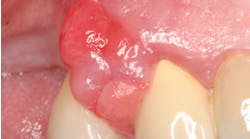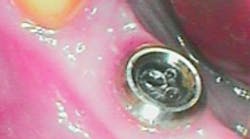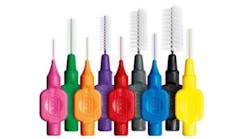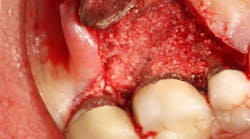And you thought dental plaque was bad: preventing evolution of biofilms
Strength-in-numbers: How biofilms take over
Biofilms are communities of bacteria that co-exist under a force field such as the environment. And survival has galvanized them to resist even the most effective antimicrobial treatments.
The community of cells adhere to a living or inert surface. They form a protective, polymer-based matrix to protect their expanding community.
Biofilms are how disease-causing bacteria progress. The force field-like nature of a biofilm’s chemistry shields it from antibiotics.
During colonization, biofilms grow through cell division and recruiting. Their strength-in-numbers identity enables some biofilm bacteria to be up to a thousand times more resistant to antimicrobials than single bacteria of the same species.
Biofilm formation can be summarized in a three-step process.
- Attachment
- Growth
- Detachment
Single-cell bacteria communicate and attach themselves to a surface. The community forms an antimicrobial community (a biofilm) and periodically detaches itself to spread its influence to other nearby or available surfaces.
Watch your mouth!
No surface is immune to biofilm colonization — not even the mouth.
The same attachment, growth, and detachment process can attack your oral health, and dental plaque is the perfect host for an aggressive biofilm community.
Biofilm is a recognized etiological agent in dental caries and periodontal diseases. Dental plaque biofilm show the same strength and resistance to antibiotics and related therapies as other biofilm communities of bacteria.
The oral cavity is particularly at risk for biofilm development. The tongue, oral mucosa, biomaterials used for restorative appliances, and tooth surfaces above and below the gingival margins are susceptible to biofilm colonies.
According to JoAnn R. Gurenlian, RDH, PhD, out of 13,000 plaque samples from 185 patients, research found conditions ranging from oral health to periodontal disease. Bacterial species appeared to have colonized the subgingival sulcus with greater numbers of organisms showing up in advanced periodontal disease.
Gurenlian states: In some individuals, the inflammatory process will also lead to the breakdown of collagen in the periodontal ligament and resorption of the supporting alveolar bone. It is at this point that the lesion progresses from gingivitis to periodontitis, continuing the same challenge from proinflammatory mediators as with chronic gingivitis. Thus, controlling dental plaque biofilm is essential to preventing and reversing gingivitis as well as preventing and managing periodontitis.
Periodontal disease is associated with many systemic diseases. This may result from the ability of subgingival plaque bacteria to gain access to the circulatory system through ulcerated epithelium of the periodontal pocket.
Dental biofilm infection can potentially contribute to both oral and systemic inflammation. The impact of periodontal microorganisms can be seen in the following systemics:
- Atheromas — periodontal microorganisms discovered in human carotid atheromas.
- Preterm birth — periodontal pathogens traveling via the bloodstream from the oral cavity to the placenta initiating preterm birth.
- Respiratory disease — bacteria released into saliva can be aspirated into the lower airway causing respiratory infection.
- Cardiovascular disease — inflammatory plaque accumulating in the blood vessels can cause thromboses and lead to myocardial infarction.
- Diabetes — periodontitis is identified as one of the major complications of diabetes.
- Adverse pregnancy outcomes — periodontitis increases risk of preterm infant low-birth weight.
The periodontal solution for dental biofilm
Treatment and prevention of dental biofilm is possible. The downside, once it establishes residence, is that biofilm cannot be completely eliminated.
Effective oral hygiene practices can lessen its impact. Gurenlian encourages: Daily tooth brushing, interdental cleaning, and the use of topical antimicrobial chemotherapeutics are patient-based strategies to reduce the bacterial biofilm and to help prevent periodontal diseases.
More aggressive approaches are essential to thoroughly treat the oral cavity. Antibiotics are a secondary approach for infection and should be applied only when clearly indicated, especially when adverse effects are a risk.
Prevention is the essential disruptive element to address dental biofilm. Periodontal treatment that includes scaling and root planing helps disrupt the colonizing bacteria.
Bacteria are ever-present. Preventing its evolution in susceptible areas, such as your oral health, will help assure that a biofilm isn't formed or at least given opportunity to expand.
Author bio
Dr. Alessandro Geminiani received his DDS degree from the University of Siena (Italy) in 2004, summa cum laude. He then pursued a Master of Science in fixed prosthodontics and prosthetic dental materials, graduating in 2006 with highest honors. He continued his education in the USA by pursuing a two-year certificate in advanced general dentistry (2009), a certificate in periodontology (2012), and a Master of Science in clinical investigation (2012). Dr Geminiani is fluent in English, Spanish (Castellano), and Italian. You can find his full CV on LinkedIn. Dr. Geminiani lives in Houston, Texas. His practice focuses on bone grafts, gingival grafts, periodontal surgery, and dental implants. Visit his blog about periodontics and dental implants at LovePerio.com.







